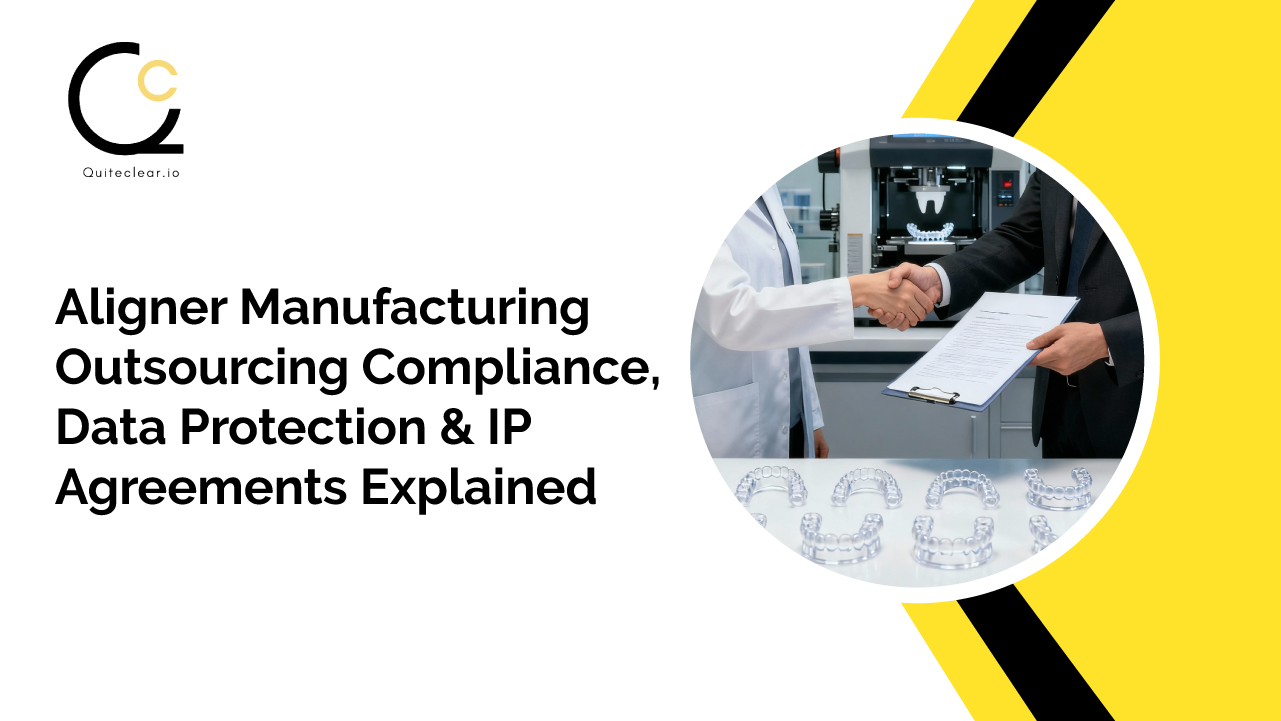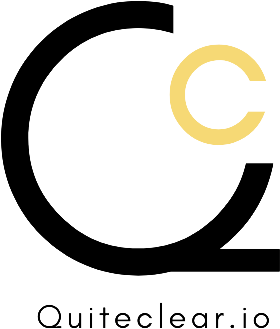Aligner Manufacturing Outsourcing: Compliance, Data Protection & IP Agreements Explained

The global aligner market is booming, and with it, an increasing number of dental practices are outsourcing production to specialized labs. It’s an efficient model: less in-house overhead, more focus on patient care.
But efficiency without legal clarity is risky. From patient data privacy to intellectual property rights, every file you share and every aligner you receive involves potential legal exposure.
Before partnering with any external lab, these five agreements should be non-negotiable.
The 5 Key Legal Agreements Every Practice Should Have
When you decide to outsource aligner production, it’s tempting to focus only on cost, quality, and speed. But what truly protects your practice isn’t the production pipeline—it’s the paperwork behind it. Every clinic that partners with an external aligner lab should have these five legal agreements in place before the first STL file is ever shared.
-
Service Agreement: Setting the Rules of Engagement
Think of this as the foundation of your partnership. A Service Agreement defines who does what, by when, and to what standard. It outlines the scope of work, turnaround times, and each party’s responsibilities, leaving no room for ambiguity.
It should also specify production standards, material compliance, and delivery timelines to ensure that your aligners meet both regulatory and clinical expectations. Including Service Level Agreements (SLAs) is crucial; these act as your quality control contract, outlining procedures for defect handling, remake policies, and communication protocols.
Without a detailed Service Agreement, even small production delays or errors can snowball into costly misunderstandings.
-
Data Protection & Confidentiality Agreement: Guarding Patient Trust
In aligner outsourcing, patient data is your most sensitive export. An agreement ensures your lab partner handles this data with the same care you do. It should cover how information is stored, used, transmitted, and deleted, while mandating encryption, access control, and secure cloud storage.
This agreement not only safeguards your patients’ privacy; it protects your clinic from reputational and legal damage in case of a data breach.
-
Intellectual Property (IP) Agreement: Protecting What You Create
Your aligner treatment plans, 3D models, and branding assets are intellectual property, and they deserve protection. Without a clear IP Agreement, ownership can become blurred, especially if your production partner contributes to design optimization or uses proprietary software.
For growing practices, this clarity prevents future conflicts and keeps your brand identity and innovation fully under your control.
-
Quality Assurance & Compliance Agreement: Ensuring Every Aligner Meets the Mark
Not all aligners are created equal and neither are all manufacturers. A Quality Assurance & Compliance Agreement establishes your expectations for production quality, materials, and regulatory compliance.
It should define medical-grade material standards, audit rights, and processes for reporting defects or compliance failures.
In short, this agreement ensures your partner meets both industry standards and your patients’ expectations.
The best outsourcing partnerships are built on more than convenience; they’re built on clarity and compliance. Each of these agreements acts like a layer of armor, ensuring that your practice scales safely, ethically, and profitably in a fast-growing aligner market.
Outsourcing aligner production can transform your practice, freeing up chair time, reducing overhead, and accelerating patient outcomes. But the moment you share scans, data, or digital treatment plans, you’re entering a space where trust must be backed by contracts.
The right legal agreements don’t slow you down; they keep your growth sustainable. They protect patient privacy, preserve your intellectual property, and ensure that every aligner leaving the lab reflects your standards of care. Before you scale your aligner operations, take the time to review your legal foundation. It’s the difference between smooth expansion and preventable exposure.
At Quiteclear, we believe transparency builds trust, from your patients to your production partners. Our platform helps practices outsource aligner manufacturing confidently, with built-in quality assurance and compliance clarity at every step.
Partner with Quiteclear and make outsourcing simpler, safer, and smarter.
